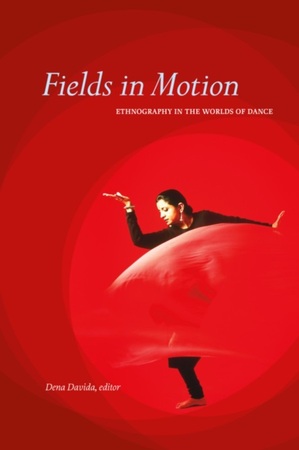 When Joann Kealiinohomoku published “An Anthropologist Looks at Ballet as a Form of Ethnic Dance” over 40 years ago, it caused quite a stir in dance studies. Ballet? Ethnic? It was like someone had finally held up a mirror to white people so they could see themselves instead of assuming they were a normative non-ethnicity. The article pushed dance scholar Dena Davida (better known in Montreal as the artistic director of Tangente) one step further, as she wondered what the ethnographic project for post-modern and contemporary dance would be. The result is now an anthology exploring the issue from a multitude of perspectives, Fields in Motion: Ethnography in the Worlds of Dance. The irony is that, because of globalization, white people are becoming a normative non-ethnicity after all. As a consequence, the authors in Fields in Motion sometimes explain experiences that might now be familiar to most, including those who have never even attended a contemporary dance show. Not that all writers or subjects discussed are white, by any means. In the first section, “Inventing Strategies, Models, and Methods,” authors focus on establishing their methodology. It makes one curious and it would have been interesting to discover what findings their methodology yielded. It might be the nature of the beast (in this case, anthologies), as many of the chapters are the introductions to theses. Still, it might have been better to select subsequent thesis chapters to offer readers some meat, at the risk of losing them a bit along the way. Some authors (like Anne Cazemajou) understandably rely heavily on description, as most readers do not have access to the object of study. Less acceptable is when writers relying on introspective ethnography become unnecessarily wordy. Michèle Moss writes, “I have always been the happiest, indeed most comfortable, when inquiring with my arms and legs as they manipulate time and space.” “Dancing” would have done just as well, if not better. In a similar vein, the second section on “Embodying Autoethnographies” is, as can be expected, the least scholarly, as writers (like Priya Thomas) get lost in novelistic descriptions that rarely engender knowledge. It is as though writers (Inka Juslin is another one) believe that, if they focus on the details, they might be able to make the reader forget about the big picture; often, there is none. Thesis statements remain hard to identify, if they are present at all. Karen Barbour even openly states that she is not concerned with “traditional research expectations of reliability and validity,” (!) which makes it hard to take her essay seriously. Indeed, it reads like a LiveJournal entry as she recounts conversations in detail, when she could have made the same points in fewer words. She references her own writing more than anyone else’s, and it accounts for almost a third of her sources. It’s being self-referential in a way that was popular almost two decades ago. While one can easily understand the value of embodiment to dance research, it does not need to be communicated as an unedited, continuous stream of consciousness. With the third section, “Examining Creative Processes and Pedagogies,” it finally feels like we are getting somewhere. Pamela Newell and Sylvie Fortin examine the power relationship between choreographer and dancers, and how it affects the creative process and outcome. In what is probably the best essay in the entire book, “Black Tights and Dance Belts: Constructing a Masculine Identity in a World of Pink Tutus in Corner Brook, Newfoundland,” Candice Pike proves that one does not need to be urban to make a worthwhile contribution to knowledge. She notes how, while male is usually the unmarked gender in society, it becomes the marked one in ballet. By interviewing the men attending a ballet class in a small town in the Maritimes, Pike is able to achieve insights into why the subjects took up ballet (to fulfil their unrealized potential) and about the need to question generalizations. In the final section, “Revealing Choreographies as Cultural and Spiritual Practices,” Emily Wright offers the most humour with her look at American Protestant dance. With just the right amount of self-consciousness, she writes, “When one hears the phrase ‘American Protestant dance,’ many things may come to mind. Or, perhaps, nothing at all.” Perhaps more naïve is her statement that “Auditions for roles in performances were competitive. This led to frustration, disappointment, and disillusionment for dancers who had a strong desire to worship God through dance but lacked the technical excellence required.” Another personal favourite is when she explains, “A more basic understanding is that a Christian dancer is a dancer who is Christian, or a Christian who dances.” Or both, Wright. Or both. Fields in Motion: Ethnography in the Worlds of Dance Dena Davida, editor 486 pp. Wilfrid Laurier University Press 39.95$
0 Comments
Leave a Reply. |
Sylvain Verstricht
has an MA in Film Studies and works in contemporary dance. His fiction has appeared in Headlight Anthology, Cactus Heart, and Birkensnake. s.verstricht [at] gmail [dot] com Categories
All
|
 RSS Feed
RSS Feed